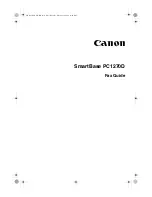
Specifications
- 86 -
*1 Transmission speed depends upon the contents of the pages, resolution, telephone line conditions
and capability of the other party’s machine.
*2 Transmission speed is based upon the ITU-T No. 1 Test Chart and original mode. If the capability of
the other party’s machine is inferior to your unit, the transmission time may be longer.
Paper specifications:
Note:
L
Do not use the following types of paper:
–
Paper with a cotton and/or fibre content that is over 20%, such as letterhead paper or paper used
for resumes
–
Extremely smooth or shiny paper, or paper that is highly textured
–
Coated, damaged or wrinkled paper
–
Paper with irregularities, such as tabs or staples
–
Paper which has dust, lint or oil stains
–
Paper that will melt, vaporize, discolour, scorch or emit dangerous fumes, near 200
°
C, such as
vellum paper. These materials may transfer onto the fusing roller and cause damage.
–
Moist paper
–
Inkjet paper
L
Some paper only accepts print on one side. Try using the other side of the paper if you are not happy
with the print quality or if misfeeding occurs.
L
For proper feeding and best print quality, we recommend using long-grained paper.
L
Do not use paper of different types or thickness at the same time. This may cause a paper jam.
L
Avoid double-sided printing.
L
Do not use paper printed from this unit for double-sided printing with other copiers or printers. This
may cause a paper jam.
L
To avoid curling, do not open paper packs until you are ready to use the paper. Store unused paper
in the original packaging, in a cool and dry location.
Plain paper/Transparency:
A4: 210 mm
×
297 mm
Letter: 216 mm
×
279 mm
Legal: 216 mm
×
356 mm
Envelope:
COM10: 105 mm
×
241 mm
DL: 110 mm
×
220 mm
ITU-T No. 1 Test Chart





































